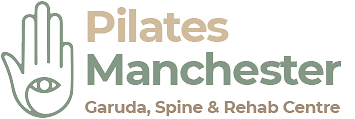
What is Parkinson’s?
- Parkinson’s disease is a progressive disease of the nervous system marked by tremor, muscular rigidity, and slow, imprecise movement, chiefly affecting middle-aged and elderly people.
- It is associated with degeneration of the basal ganglia of the brain and a deficiency of the neurotransmitter dopamine.
Can Pilates benefit Parkinson’s disease?
- Since all treatment options can only slow progression of symptoms, keeping physically active is integral to living at one’s potential.
- The saying “use it or lose it” applies here. And since there is the obvious “mind-body” connection governing the symptoms of PD, the comprehensive Pilates method can offer the optimal environment to maintain neuromuscular movement potential.
- “To achieve the highest accomplishments within the scope of our capabilities in all walks of like, we must constantly strive to acquire strong, healthy bodies and develop our minds to the limit of our ability.” – Joseph Pilates, Return to Life
- As with all special needs, it is preferable to find a Pilates teacher who has post-rehabilitation experience, works under the guidance of a rehabilitation professional, or is a Pilates certified Physical Therapist.
How Yoga can benefit Parkinson’s disease
- Parkinson’s disease patients can now improve their condition thanks to the restorative benefits of yoga.
- Studies have also shown that regular practice of yoga for people suffering from Parkinson’s can help control the disease.
- Gentle twists and restorative poses that strengthen the trunk are believed to reduce stiffness and improve mobility.
- Stiffness in the body’s core is one of the most debilitating symptoms of Parkinson’s disease because it hampers the ability to walk or stand upright.
- St John of God Frankston Rehabilitation Hospital has introduced a ten-week yoga program designed specifically for Parkinson’s disease patients.
- The hospital expects the yoga program will benefit patients through visibly reducing tremors and improving balance, steadiness of gait, and control of body movements.
- Yoga can also reduce depression, anxiety and fatigue in Parkinson’s patients and improve sleep.
Can Rehabilitation benefit Parkinson’s disease?
- There is growing evidence that individuals with mild to moderate Parkinson’s disease can benefit from treatment that targets flexibility, strengthening and cardiovascular conditioning.
- Physical activity is an important part of a healthy lifestyle for everyone. These treatments can improve balance, walking and overall functional ability.
- In addition, therapy may slow down the progression of the disease.
- Moderate to vigorous exercise/activity should begin immediately upon diagnosis and continue throughout the course of the disease.
- Evidence also supports that regular aerobic exercise such as walking prevents development of cognitive impairment in healthy elderly individuals and this can hold true in Parkinson’s disease as well.
